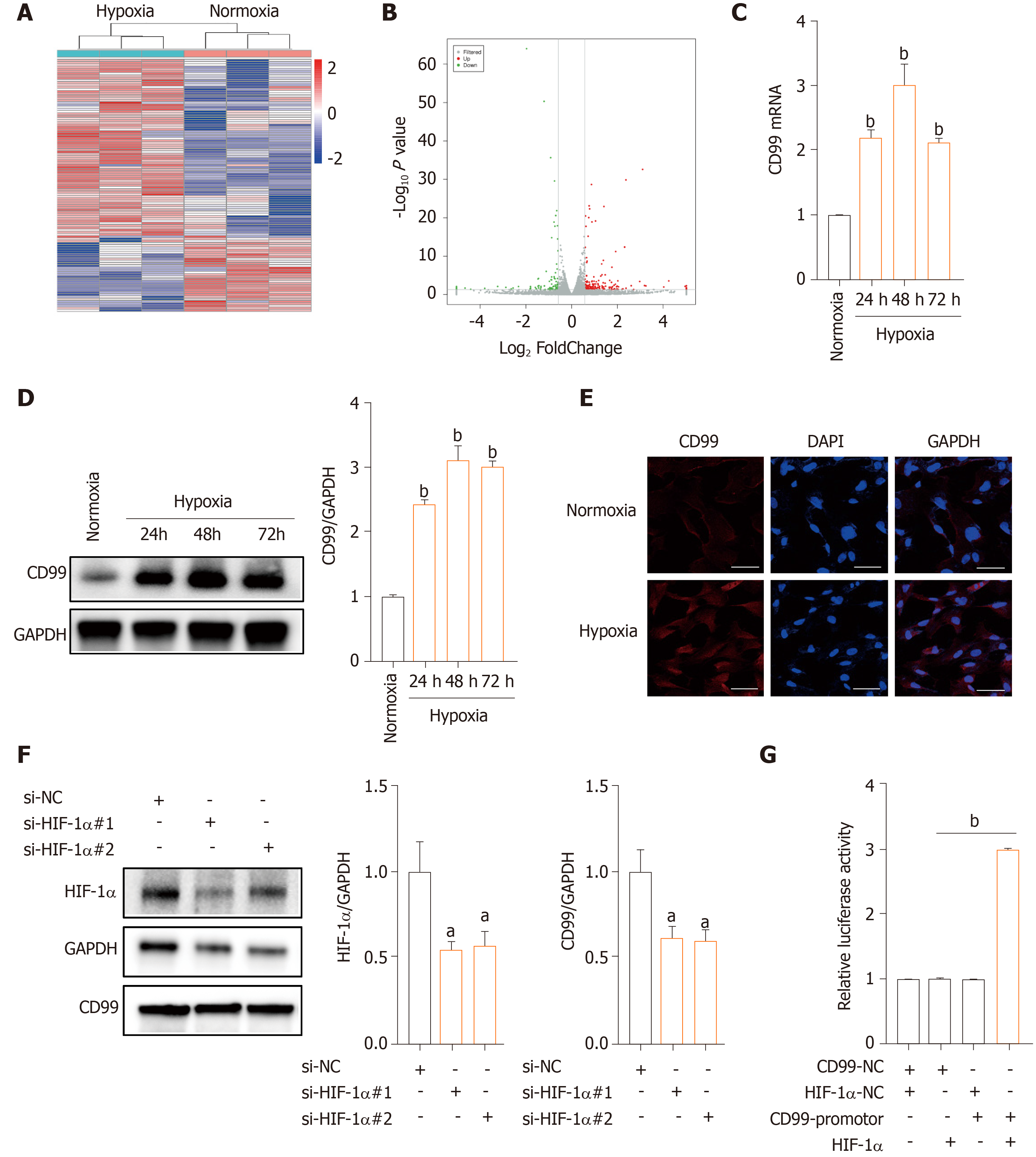Copyright
©The Author(s) 2021.
World J Stem Cells. Apr 26, 2021; 13(4): 317-330
Published online Apr 26, 2021. doi: 10.4252/wjsc.v13.i4.317
Published online Apr 26, 2021. doi: 10.4252/wjsc.v13.i4.317
Figure 3 Hypoxia induces hypoxia-inducible factor 1α-mediated CD99 expression.
A: Heat map showing hierarchical clustering of differentially expressed genes (DEGs) human placenta-derived mesenchymal stem cells (hP-MSCs) cultured under hypoxia and normoxia for 48 h; B: Volcano plot of DEGs; C: Effect of hypoxia on CD99 expression in hP-MSCs by real-time quantitative polymerase chain reaction. Data are means ± SD (n = 3); Student’s t-test. bP < 0.01 vs normoxia; D: Western blotting of CD99 in hP-MSCs exposed to hypoxia for 24, 48, or 72 h with normalization against glyceraldehyde-3-phosphate dehydrogenase (GAPDH). Data are means ± SD (n = 3). bP < 0.01 vs normoxia; E: Immunofluorescence microscopy of CD99 on hP-MSCs cultured under hypoxia and normoxia for 48 h (× 20 magnification; scale bars, 50 μm); F: Western blotting of hypoxia-inducible factor 1α (HIF-1α) and CD99 expression in hP-MSCs exposed to hypoxia for 48 h after pretreatment with HIF-1α-specific small interfering RNAs (si-HIF-1α#1 and si-HIF-1α#2) with normalization against GAPDH. Data are means ± SD (n = 3). aP < 0.05 vs si-NC; G: Relative luciferase activity of a CD99 reporter plasmid in HEK-293 cells co-transfected with an HIF-1α activation vector after 48 h. Data are means ± SD (n = 3). bP < 0.01. NC: Negative control.
- Citation: Feng XD, Zhu JQ, Zhou JH, Lin FY, Feng B, Shi XW, Pan QL, Yu J, Li LJ, Cao HC. Hypoxia-inducible factor-1α–mediated upregulation of CD99 promotes the proliferation of placental mesenchymal stem cells by regulating ERK1/2. World J Stem Cells 2021; 13(4): 317-330
- URL: https://www.wjgnet.com/1948-0210/full/v13/i4/317.htm
- DOI: https://dx.doi.org/10.4252/wjsc.v13.i4.317









